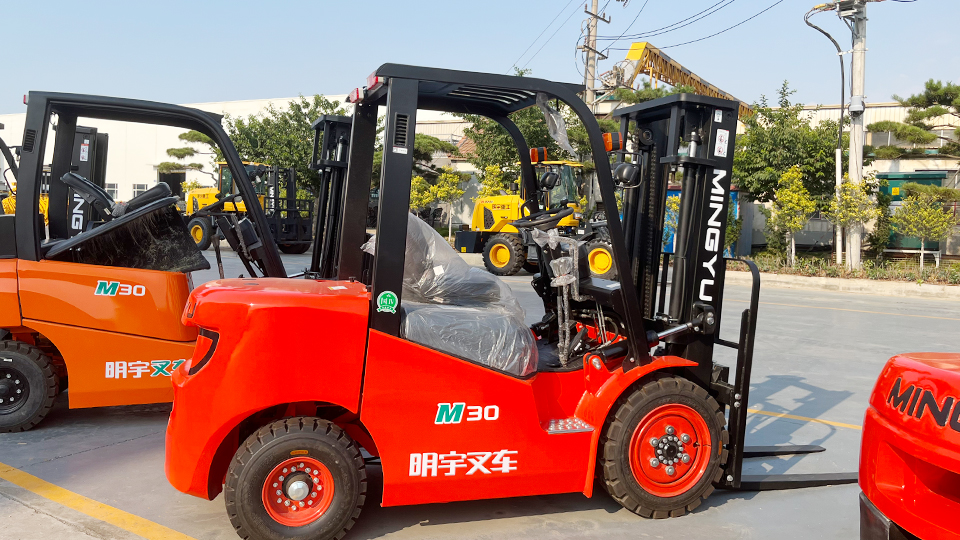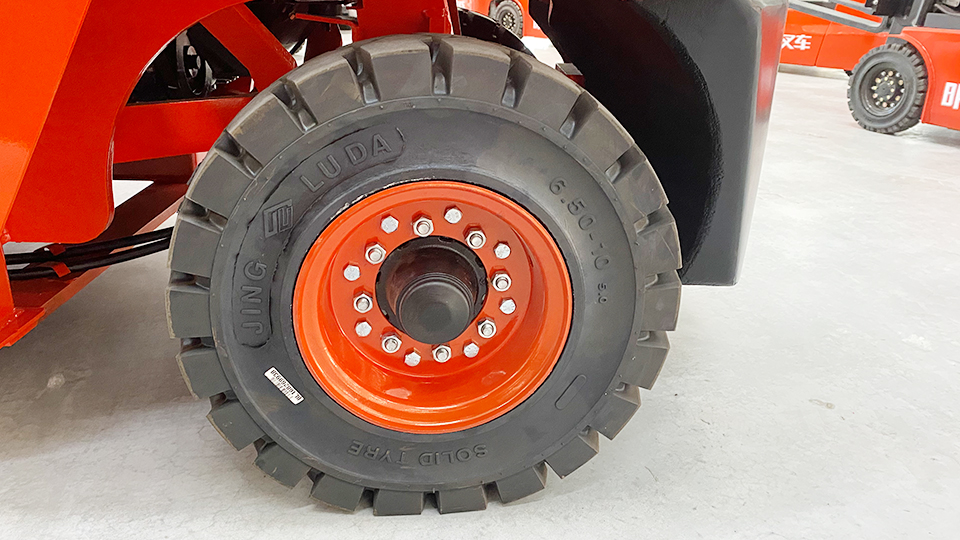
Why is a Forklift So Expensive? Unpacking the Costs Behind Material Handling Workhorses
Forklifts are indispensable pieces of equipment for a vast array of industries, from warehousing and logistics to construction and manufacturing. Their ability to lift and transport heavy loads efficiently makes them crucial for productivity. However, the price tag associated with acquiring a forklift can often raise eyebrows. A seemingly simple machine can easily cost tens of thousands of dollars, with specialized models reaching into six-figure territory. Understanding the multifaceted reasons behind this expense requires a deep dive into the design, manufacturing, technology, and market factors that contribute to the overall cost of a forklift.
1. Engineering and Design Complexity:
Despite their seemingly straightforward function, modern forklifts are sophisticated pieces of engineering. They are designed to safely lift and move substantial weights, often at significant heights and in demanding environments. This necessitates robust structural engineering, intricate hydraulic systems, precise control mechanisms, and sophisticated safety features.
Structural Integrity: The mast, chassis, and forks must be constructed from high-strength steel and engineered to withstand immense stress and strain. Finite element analysis and rigorous testing are employed to ensure structural integrity and prevent catastrophic failures under load. This engineering expertise and material quality contribute significantly to the cost.
Hydraulic Systems: The lifting and tilting functions are powered by complex hydraulic systems involving pumps, cylinders, valves, and hoses, all designed to operate reliably under high pressure. Precision manufacturing and high-quality components are essential for safety and longevity, adding to the overall cost.
Control Systems: Modern forklifts often incorporate sophisticated electronic control units (ECUs), sensors, and actuators to manage speed, lifting height, load capacity, and stability. These systems require significant research and development, as well as the use of durable and reliable electronic components.
2. High-Quality Materials and Manufacturing Processes:
The demanding operational environment of forklifts necessitates the use of high-quality materials and stringent manufacturing processes. Unlike consumer vehicles that primarily operate on relatively smooth surfaces, forklifts often work on uneven terrain, in dusty or corrosive environments, and are subjected to frequent impacts and heavy loads.
Heavy-Duty Steel: The primary structural components are typically made from specialized grades of steel chosen for their strength, durability, and resistance to fatigue. The cost of these materials is inherently higher than that of standard automotive steel.
Robust Components: From heavy-duty tires designed to withstand punctures and abrasion to industrial-grade engines or high-capacity batteries built for extended use, every component is selected for its ability to endure harsh operating conditions.

Precision Manufacturing: Welding, machining, and assembly processes must adhere to strict tolerances to ensure the safe and reliable operation of the forklift. This requires skilled labor and advanced manufacturing equipment, both of which contribute to the final cost.
3. Specialized Components and Systems:
Forklifts are not simply generic machines; they are tailored to specific applications through a range of specialized components and systems that add to their cost:
Masts and Lifting Mechanisms: Different mast configurations (single, duplex, triplex) and lifting mechanisms are designed to achieve varying lift heights and capacities. The complexity of these systems, especially those with high reach capabilities or specialized attachments, increases manufacturing costs.
Power Source: The choice between internal combustion engines (diesel, propane, gasoline) and electric powertrains (lead-acid or lithium-ion batteries) significantly impacts the cost. IC engines require complex fuel systems, exhaust systems, and emission control technologies. Electric forklifts necessitate expensive batteries and charging systems, although the long-term operational costs may be lower. Lithium-ion batteries, in particular, represent a significant upfront investment due to their advanced technology and performance benefits.
Safety Features: Modern forklifts are equipped with a multitude of safety features, including operator presence systems, overload protection, stability control, lights, horns, and alarms. These features are crucial for preventing accidents and complying with safety regulations, but they add to the overall complexity and cost of the machine.
Attachments: A wide array of attachments, such as clamps, rotators, side-shifters, and push/pull devices, allow forklifts to handle diverse types of loads. These specialized attachments require additional engineering, materials, and manufacturing, increasing the total cost of the forklift package.
4. Research and Development (R&D) Costs:
Forklift manufacturers invest heavily in research and development to improve performance, efficiency, safety, and environmental compliance. This includes:
Developing New Technologies: Innovations in electric powertrains, battery technology, automation, and telematics require significant financial investment and engineering expertise. These advancements often lead to higher initial costs but can provide long-term benefits in terms of productivity and operational efficiency.
Meeting Regulatory Standards: Forklifts must comply with stringent safety and environmental regulations in different regions. R&D efforts are directed towards meeting these standards, which can involve developing new engine technologies, emission control systems, and safety features.
Improving Ergonomics and Operator Comfort: Designing forklifts that are comfortable and easy to operate is crucial for reducing operator fatigue and improving productivity. R&D in this area focuses on optimizing seating, controls, visibility, and noise reduction.
5. Low Production Volumes and Specialized Market:
Compared to mass-produced automobiles, forklifts are manufactured in significantly lower volumes. This lack of economies of scale means that the per-unit cost of components, manufacturing processes, and R&D is distributed across a smaller number of units, leading to a higher selling price.
Furthermore, the forklift market is highly specialized, with different industries requiring specific types and configurations of forklifts. This necessitates a diverse product portfolio and less opportunity for mass production of standardized models.

6. Distribution, Sales, and Support Network:
The cost of a forklift also includes the expenses associated with its distribution, sales, and after-sales support network. This involves:
Dealer Networks: Manufacturers rely on dealer networks for sales, service, and parts distribution. These dealers incur costs related to facilities, inventory, sales staff, and service technicians, which are factored into the final price.
Training and Support: Providing comprehensive training for operators and maintenance personnel, as well as offering technical support and readily available spare parts, is crucial for ensuring the safe and efficient operation of forklifts. These services contribute to the overall cost of ownership, which is often reflected in the initial purchase price.
Warranty and Service Agreements: Manufacturers typically offer warranties on their forklifts, and extended service agreements are also common. The cost of providing these assurances against defects and breakdowns is factored into the selling price.
7. Economic and Market Factors:
External economic and market factors also play a role in determining forklift prices:
Raw Material Costs: Fluctuations in the prices of steel, rubber, and other raw materials directly impact manufacturing costs.
Labor Costs: Skilled labor is required for engineering, manufacturing, and servicing forklifts. Changes in labor costs can influence the final price.
Currency Exchange Rates: For manufacturers that import components or export finished forklifts, currency exchange rate fluctuations can affect pricing.
Supply and Demand: Market demand for specific types of forklifts can influence pricing. High demand and limited supply may lead to higher prices.
Competition: The level of competition in the forklift market can also influence pricing strategies.
Conclusion:
The seemingly high cost of a forklift is a result of a complex interplay of factors. The robust engineering, high-quality materials, specialized components, significant R&D investment, low production volumes, extensive distribution and support networks, and various economic and market forces all contribute to the final price. While the initial investment can be substantial, it's crucial to consider the long-term value and productivity gains that a reliable and well-maintained forklift provides to businesses across numerous industries. Understanding the reasons behind the cost allows buyers to make more informed decisions and appreciate the sophisticated machinery that these material handling workhorses truly are.
Name: selena
Mobile:+86-13176910558
Tel:+86-0535-2090977
Whatsapp:8613181602336
Email:vip@mingyuforklift.com
Add:Xiaqiu Town, Laizhou, Yantai City, Shandong Province, China